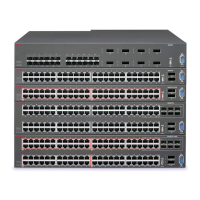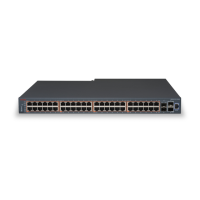16. Repeat steps 11 through 15 to add additional VLANs.
Note that the new VLANs do not have any assigned ports and routing is set to false.
17. From the VLANs tab of the WebGui, click to select the desired VLAN.
In this example, VLAN 2 will be selected.
18. Click IP.
The new tab of IP, VLAN-2 opens.
19. Click Insert.
20. Input the desired IP address and subnet mask.
21. Click insert to complete the IP address assignment.
The new VLAN IP address appears.
22. Return to the VLANs tab and repeat steps 18 through 21 to assign IP addresses to each
additional VLAN.
23. Return to the VLANs table and enable routing for each of the newly configured VLANs by
setting the routing value to true.
Configuring VLANs for voice and data
July 2015 Getting Started with Avaya ERS 3500 Series 159
Comments on this document? infodev@avaya.com

